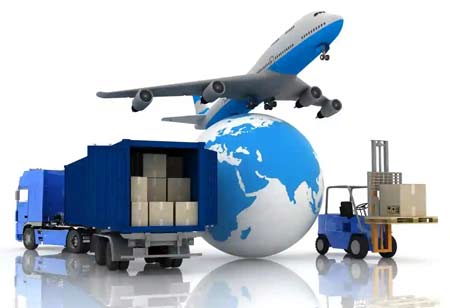THANK YOU FOR SUBSCRIBING
THANK YOU FOR SUBSCRIBING

By
Logistics Transportation Review | Friday, June 30, 2023
Stay ahead of the industry with exclusive feature stories on the top companies, expert insights and the latest news delivered straight to your inbox. Subscribe today.
With the increasing changes in the worldwide market, cold chain management may become more sophisticated in order to satisfy the needs of businesses.
FREMONT, CA: Implementing a data-driven strategy, digitising, and increasing visibility into its processes can benefit the cold chain segment. Technology enables cold chain management shippers, carriers, and brokers to optimise operations and provide customers with fresher, higher-quality items. They may prevent food waste and guarantee that perishable foods are delivered to customers "fresh in, fresh out" by doing this.
Temperature control is critical to the safe movement of perishables along the supply chain. To prevent spoilage and satisfy customers, time, temperature, and humidity are all delicate aspects that must rigorously follow best practices. Techniques such as pre-cooling, adequate loading, and temperature maintenance are critical, although they are only sometimes followed due to outmoded processes and cost-cutting measures.
Best Practices for Cold Chain Logistics
With increased customer demand for healthier, fresher, and organic products, the business has undergone spectacular expansion in recent years.
Temperature Monitoring and Control
Any temperature changes or fluctuations can quickly lead to expensive costs and the probable deterioration of perishable items, lowering consumer satisfaction and reducing income. To maintain the integrity of the cold chain, monitoring temperature, humidity, and load shift in real time is essential.
A standard method for keeping track of temperature while in transit is temperature data recorders must be implemented. These devices replace antiquated manual methods to guarantee stakeholders that perishable goods are delivered and kept safely. They generally record the temperature every 10-15 minutes, displaying it, storing it in memory, or wirelessly transferring it. There are two categories of loggers available: single-use and reusable. These loggers provide a range of capabilities, including integrated sensors for recording multiple temperatures concurrently, the ability to be placed in different locations, and compatibility with tracking software.
Improved food safety, longer product shelf lives, cost savings from fewer rejected loads, increased customer satisfaction from on-time delivery, and proof to substantiate goods claims are just a few advantages of temperature data loggers. Furthermore, loggers can offer improved visibility into the status of shipments and analytics for process changes, making cold chain operations more productive and economical.
Warehouse and Storage Management
Produce undergoes multiple hops from farm to table to bring it closer to the end consumer. Each flight in the cold chain supply chain, from storage to shipping, must adhere to strict temperature and humidity standards to guarantee that the consumer obtains the freshest product.
Food-grade storage is essential to preserving the efficacy, quality, and safety of temperature- and humidity-sensitive products across the supply chain. Certain storage guidelines must be followed to maintain fresh fruit in optimal condition. Bananas, for example, must be stored separately from the majority of other products due to their specialised temperature and humidity requirements.
Effective rotation methods for cold storage, such as the "first in, first out" (FIFO) approach, prevent product spoilage during warehouse storage. It is essential to prioritise product rotation based on expiration dates, regardless of the specific method employed. Factors such as the time spent in the warehouse and the transportation period should be considered. This meticulous approach guarantees product freshness throughout the entire storage-to-shelf journey.
To track and maintain the condition of the products, temperature monitoring and control systems must be in place. Consequently, it is of the utmost importance to choose a cold chain storage provider for commercial storage that uses appropriate storage tools, such as temperature-controlled warehouses and storage units.
Risk Assessment and Contingency
Unexpected transportation incidents like traffic, weather conditions, or mechanical problems have the potential to occur at any time. By developing backup strategies that provide a clear set of actions to follow in the event of such disruptions, the negative consequences of these incidents can be reduced, ensuring that they do not significantly hinder the overall operation. Predictive analytics and real-time tracking are two examples of recent technologies that can improve planning and decision-making by increasing insight into transportation capacity. Additionally, they can help anticipate possible issues and enable speedier reaction times when issues arise.
The process of cold chain logistics should include risk analysis and emergency preparedness. Finding potential hazards and creating a backup plan are steps in the process. In order to prevent food loss within cold chain supply logistics, it is crucial to comprehend and minimise these risks as much as feasible. To handle high-stakes cold chain exceptions, businesses should have insight into the cold chain for every shipment and quick access to a large carrier network.
Visibility-Enabled Supply Chain Collaboration
Real-time visibility is essential in cold chain logistics to guarantee that products maintain the proper temperature during delivery and storage. It entails real-time surveillance and monitoring of not just the product's location but also its temperature. Communicating this information to supply chain partners as soon as possible helps to avoid delays or spoiling. Collaboration in the supply chain is especially important for time-sensitive products like produce. With real-time visibility, businesses may optimise their supply chain operations by lowering wait times and detention costs. It also provides valuable insights and data analytics to spot mistakes and make modifications for future operations.
I agree We use cookies on this website to enhance your user experience. By clicking any link on this page you are giving your consent for us to set cookies. More info





